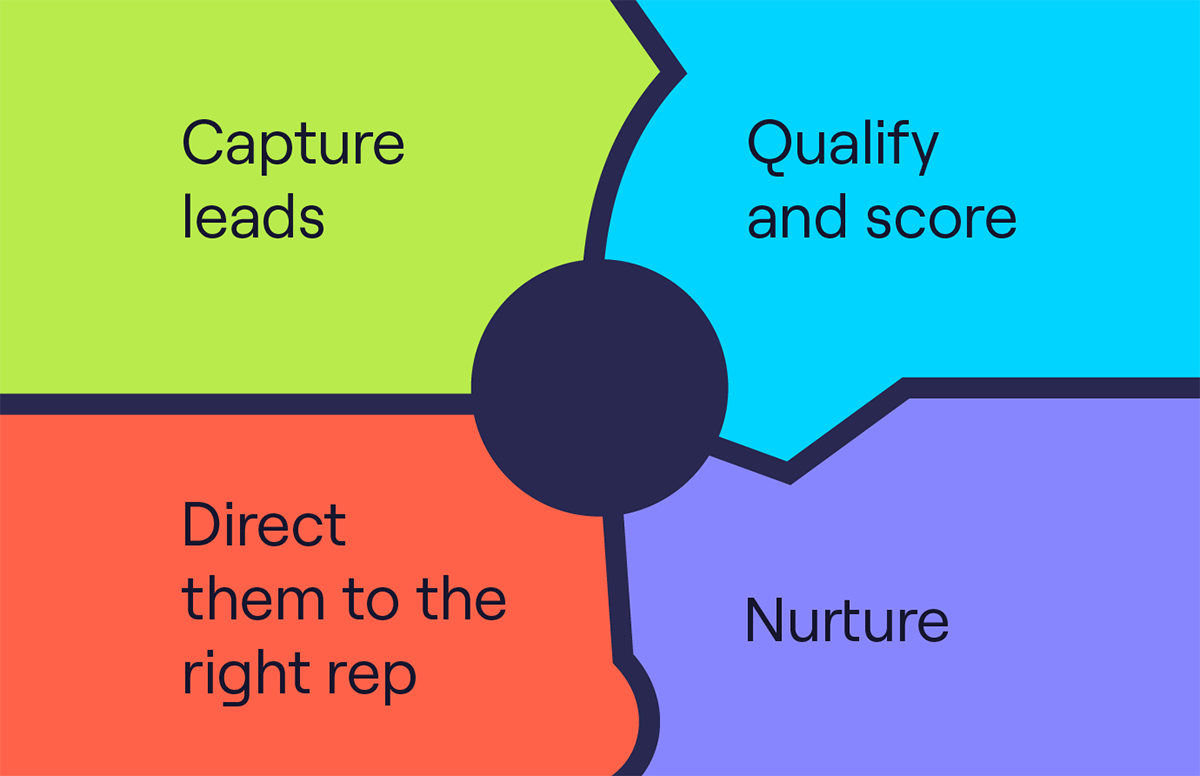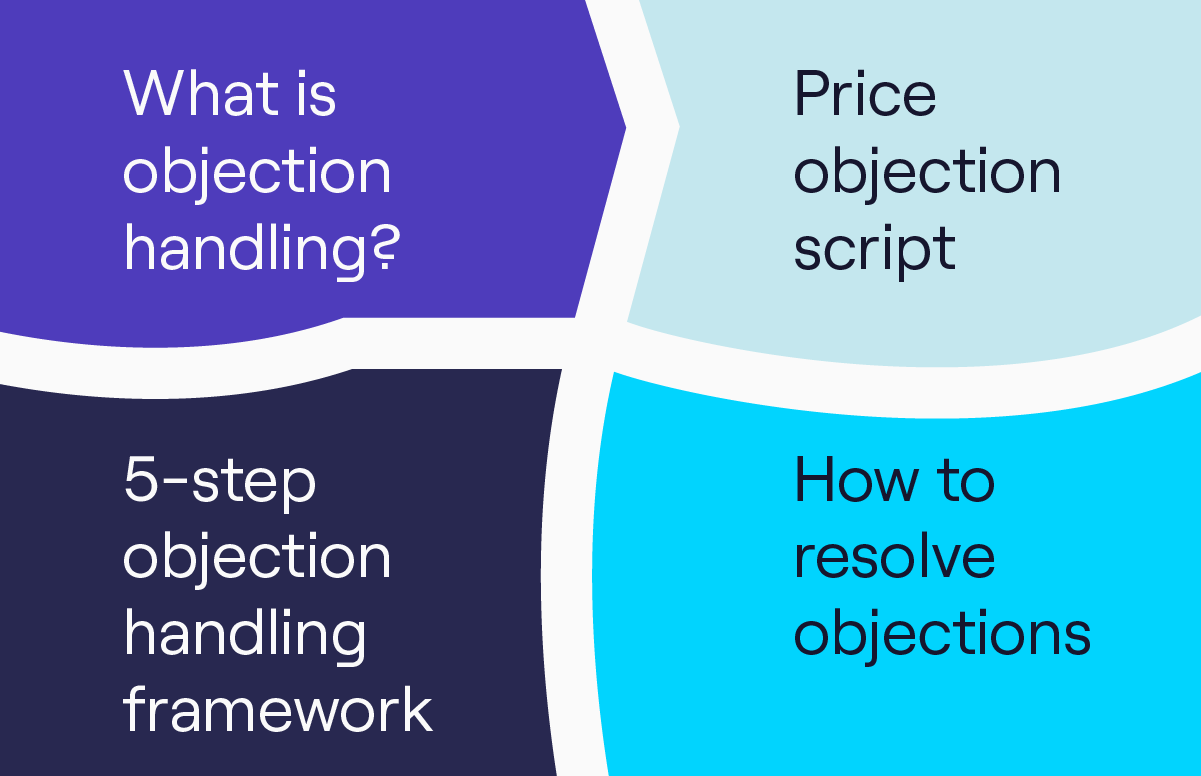CRM Enrichment & Enhancement: The 5 Best Ways to Manage it
Is your sales team drowning in admin and still not quite landing deals as quickly as expected? Or maybe they’re struggling with dropped-off leads and low win rates, but aren’t sure why?
When this happens, it’s not just frustrating; it can actively derail your sales deals and your business growth, and poor lead data can cause it.
Bad data costs businesses a fortune, and poor data quality costs organisations an average of £12.9 million annually (Gartner). But there’s a solution that’s transforming how B2B companies manage customer relationships.
CRM enrichment (an area of data enrichment) is now essential in every sales and marketing team’s tech stack. It can eliminate data hygiene issues, reduce admin work, and help your team get the actionable information they need to reach the right prospects at the right time.
Three top CRM enrichment tools making waves in 2025
Let’s look at the top CRM enrichment tools. Each is also a well-known data provider.
Cognism
Best for: Enterprise and high-growth teams needing real-time, compliant enrichment with global coverage.
Cognism delivers accurate, phone-verified contact data with firmographic, technographic, and intent insights. Thanks to the compliance-first design and instant enrichment updates, it’s ideal for teams executing large-scale outbound campaigns and ABM strategies.
/Cognism%20Product%20-%20Compressed/Enrich%20Stats-WEBP.webp?width=600&height=244&name=Enrich%20Stats-WEBP.webp)
Pros
-
High-accuracy B2B data, including direct dial numbers.
-
Seamless integrations with Salesforce, HubSpot, Outreach, and LinkedIn extension.
-
DaaS offering with flexible delivery options to integrate B2B data in the format and frequency of your choice.
-
Reduces admin work through API & CSV enrichment capabilities.
Pricing
Custom pricing based on team size and feature set; choose from our Grow, Elevate and DaaS pricing.
Test out the Cognism data quality for your company with a data sample. Our team will provide you with free leads that match your ICP.
ZoomInfo
Best for: US-based mid-market to enterprise sales and marketing teams.
ZoomInfo offers one of the most comprehensive B2B databases available, especially strong in North American markets. It combines firmographic and technographic data alongside intent signals, making it a staple for enterprise targeting.
/Competitors%20and%20other%20tools/ZoomInfo-Competitor-Alternative.webp?width=630&height=394&name=ZoomInfo-Competitor-Alternative.webp)
Pros
-
Deep contact and company coverage in U.S. and global markets.
-
Rich insights through intent signals and web visitor tracking tools.
-
Advanced features supporting segmentation, reporting, and ABM workflows.
-
Has a DaaS solution, like Cognism.
Pricing
ZoomInfo’s pricing is quote-based and tends to be high. Add-ons like advanced intent data or additional integrations increase costs substantially.
HubSpot Breeze Intelligence
Best for: Teams using HubSpot’s CRM and looking for native enrichment with AI-powered insights.
Formerly Clearbit within HubSpot, Breeze Intelligence (launched in late 2024) seamlessly enriches HubSpot contact and company records with over 40 data attributes. It also integrates buyer intent insights and form optimisation features within the platform.
/Competitors%20and%20other%20tools/Breeze-Intelligence-Competitor-Alternative-Clearbit.webp?width=422&height=531&name=Breeze-Intelligence-Competitor-Alternative-Clearbit.webp)
Pros
-
Native integration with HubSpot—no third-party tools required.
-
Provides both data enrichment and first-party buyer intent within CRM workflows.
-
Form shortening improves conversion by reducing unnecessary fields.
-
Easy to configure enrichment settings (e.g. automatic, continuous, bulk).
Pricing
Breeze Intelligence does not yet have public-facing pricing. You will need to contact the HubSpot team.
Ways CRM enrichment tools make your life easier
Wondering where to get started with CRM enrichment? Let’s look at five game-changing ways to use CRM enrichment to increase efficiency and drive more sales.
1. Automate data entry to save time
Manual data entry is the vampire of productivity: It can suck the life out of your team’s day.
/Cognism%20Product%20-%20Compressed/sales-companion-integrations-webp.webp?width=500&height=500&name=sales-companion-integrations-webp.webp) With CRM enrichment, data flows automatically from trusted external sources into your system. This means:
With CRM enrichment, data flows automatically from trusted external sources into your system. This means:
- Your reps spend less time on admin, and all that energy can go right into selling.
- New contacts are instantly enriched with company data to give your team up-to-date and actionable information.
- Record creation happens automatically when you identify new prospects.
These time savings can be significant. One BDE using Cognism saves approximately 10 hours of admin work every week.
2. Unlock relationship intelligence
Enriched CRMs reveal the hidden relationship map across your organisation by:
- Identifying when colleagues have existing relationships with target accounts.
- Tracking connection strength based on interaction frequency and recency.
- Highlighting the warmest paths to introduction for new opportunities.
This relationship intelligence transforms cold outreach into warm introductions, dramatically improving response rates and shortening sales cycles. You can send the right messages at the right time; don’t underestimate that value.
3. Centralise insights from your tech stack
B2B brands typically have complex tech stacks. One study found that almost half of the participants had between 5 and 10 tools in their tech stack, but some brands had more than 20.
That many tools can hold a lot of information… and they can also create massive data silo issues.
CRM enrichment brings together intelligence from:
- Email engagement metrics.
- Calendar and meeting intelligence.
- LinkedIn activity and connection data.
- Webinar and event participation.
- Content consumption and website behaviour.
By unifying these insights in your CRM, you create a single source of truth that eliminates contradictory data and duplicate work.
4. Enhance decision-making with real-time updates
Real-time enrichment ensures you’re always working with the freshest intelligence.
Enhance the data already in your CRM when you’re prospecting with information about:
- Job changes and role updates.
- Company growth signals and funding events.
- New technology implementations.
- Buying intent signals.
/Cognism%20Product%20-%20Compressed/Cognism-alternative-competitor-listicle-webp-2.webp?width=672&height=524&name=Cognism-alternative-competitor-listicle-webp-2.webp)
You may have been watching a potential prospect for a while and saw that, with a new round of funding, they also hired a new CMO with a high intent to scale. That’s a good time to strike; tools like Sales Companion are great for helping to identify all these signals.
You can time your outreach perfectly and adjust strategies based on current circumstances, not outdated assumptions.
5. Use AI to predict and prioritise outcomes
AI needs data to deliver insights, and enriched CRMs can give your AI platform the up-to-date and thorough data it needs.
With comprehensive data enrichment, AI can:
- Predict which leads will most likely convert based on multiple firmographic and activity traits.
- Identify accounts showing sales triggers before you reach out.
- Show you the tools in your prospect’s tech stack and the intensity with which they use them.
- Recommend next best actions and timing for each prospect.
- Flag at-risk customers before they churn.
AI might recommend that you send a follow-up email to one client to check in, but that you call another with an aggressive offer.
This market intelligence helps teams focus efforts where they’ll have the greatest impact, dramatically improving efficiency across sales and marketing.
What is CRM enrichment?
CRM enrichment enhances your customer database with additional, corrected, or relevant information not captured during the initial data entry. It makes sure your CRM contact data isn’t outdated.
Standard CRMs store the basics: Names, contact details, company associations, and interaction logs. However, you can use additional platforms to enhance this CRM data further. That’s a different beast, giving your sales reps extensive data on potential customers.
You can use your CRM in tandem with data around:
- Firmographics: Company size, revenue, recent funding, and industry.
- Technographics: Existing tech stack (including marketing and sales tools), software usage, and integration potential.
- Intent signals: Buying signals, content consumption, and research patterns.
- Social insights: Professional connections, engagement patterns, and influence metrics.
This information can be invaluable to your sales and marketing teams. You don’t just know that a prospective customer is a good ICP match; you can also see whether they’re engaged with outreach or showing intent signals like active research.
Why CRM enrichment matters
While having a CRM was enough to be competitive ten years ago, that’s no longer the case.
Sales and marketing are hyper-competitive today, and they’re hyper-personalised. Basic contact information doesn’t cut it anymore, with B2B buyers expecting relevant experiences at every touchpoint. Your teams need comprehensive (and extensive!) data to deliver that.
The growing importance of real-time, complete CRM data links directly to several key trends:
- Personalisation has become the standard, not the luxury. Busy decision-makers immediately filter out generic outreach.
- Buyer journey intelligence requires multiple data dimensions to map and predict next steps accurately.
- Account-based strategies demand rich firmographic and technographic data to execute effectively.
Meanwhile, the cost of poor data has never been higher. Teams struggle with:
- Incomplete records create blind spots in your targeting and potentially missed connections.
- Outdated information leading to irrelevant or failed outreach.
- Poor segmentation results in wasted campaign spend.
You could easily target a strong potential ICP fit that seems engaged, only to realise midway through the sales process that their tech stack isn’t compatible with the software you’re selling. Or, you could send follow-up messages to someone who isn’t the key decision-maker or has changed roles entirely.
Enriched CRM data isn’t just nice to have: It’s a must-have for teams who want to scale their sales and marketing initiatives.
CRM enrichment & enhancement in action
Wondering how you can leverage CRM enrichment? Here’s what it can look like in action.
Marketing campaign segmentation
A marketing team could use technographic data to identify accounts with specific tech stack combinations. By focusing campaigns on accounts that could integrate with your software, you’re likely to see higher engagement rates by noting this upfront and avoiding wasting time on leads that would be unlikely to convert.
Lead scoring and routing
Sales ops teams could implement intent-based enrichment to spot research activity among target accounts.
This approach would allow for a scoring model that prioritises accounts showing active buying signals, potentially increasing meeting booking rates. If your team knows which products a customer is considering, they could improve their pitches and follow up more frequently.
Real-time account intelligence
An enterprise marketing team leveraging account-based marketing might set up real-time alerts for funding events within their target accounts. This would enable timely outreach that aligns with major company milestones, which is when budgets are often reassessed and new initiatives launched.
How to choose the right CRM enrichment tool
Not all enrichment solutions are created equal. When evaluating options, prioritise:
- Data accuracy: Look for providers with transparent data sourcing methods and regular accuracy audits. Cognism uses multiple verification methods to ensure high data accuracy.
- Integration capabilities: The tool should seamlessly connect with your existing CRM and tech stack, either through native integrations or easy API options.
- Real-time sync: Ensure data is updated automatically and frequently, as real-time enrichment allows for immediate action on changing signals.
- Enrichment depth: Assess the breadth of data types provided. Comprehensive platforms like Cognism offer firmographics, technographics, intent data, and contact details in a single solution.
- Compliance standards: With data regulations constantly evolving, choose providers with robust compliance frameworks and clear data provenance. For example, all of Cognism’s data is GDPR- and CCPA-compliant.
- Scalability: Some tools may be well-suited for small or mid-market brands, while others have more complex features and can handle the volume of enrichment needed by larger organisations. Cognism, for example, is a good option for large teams and enterprise companies.
The future of CRM enrichment
CRM enrichment— and the sales and marketing world as a whole— is evolving alongside rapidly changing technology. Here’s what’s coming soon:
- AI-powered enrichment will move beyond adding data to actually generating insights. Imagine your CRM not just telling you a prospect’s job title changed, but explaining why that creates an opportunity.
- Predictive enrichment will anticipate data needs before they arise, automatically gathering intelligence specific to emerging opportunities.
- Privacy-first approaches balance enrichment with strengthening compliance, ensuring your data advantages don’t come with legal risks.
For competitive go-to-market teams, staying ahead of these trends isn’t optional – it’s essential for survival in increasingly data-driven markets.
Frequently asked questions
Why do companies need CRM enrichment?
Companies need CRM enrichment to personalise customer interactions, improve targeting accuracy, prioritise opportunities effectively, and make data-driven decisions. Enriched data reduces manual research and admin work, and provides crucial context for sales and marketing activities.
What tools are best for CRM enrichment?
The best CRM enrichment tools offer accurate data, seamless CRM integration, real-time updates, comprehensive data types, and strong compliance standards. Solutions should align with your specific use cases and integrate well with your existing tech stack.
Cognism is one of the most popular tools for large teams and enterprise companies, thanks to its comprehensive enrichment features and high data accuracy.
Is CRM enrichment the same as lead enrichment?
Lead enrichment typically focuses on adding data to new prospects at the top of the funnel. CRM enrichment is broader, continuously enhancing data across the entire customer lifecycle from prospect to long-term customer.



